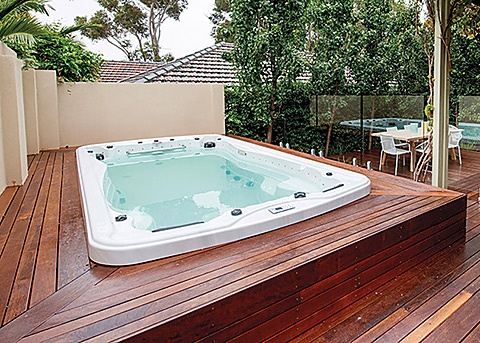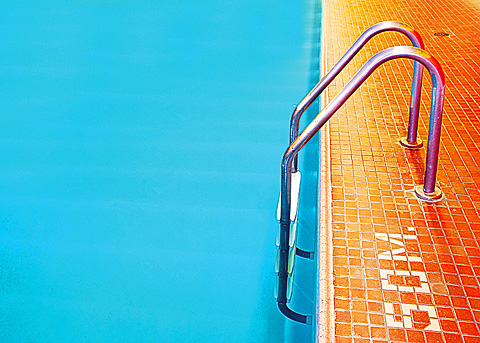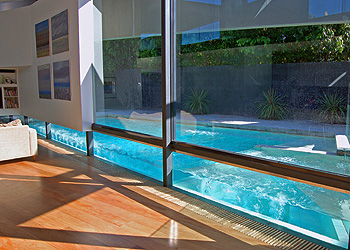 Kit pools installed by unregistered pool builders can leave homeowners with expensive legal bills, warranty, OHS and insurance issues.
Kit pools installed by unregistered pool builders can leave homeowners with expensive legal bills, warranty, OHS and insurance issues.
"The most effective way consumers can protect their financial and legal position is to use a builder who is registered with the Victorian Building Authority(VBA), specifically in the categories of 'Domestic Builder Unlimited' or 'Domestic Builder – Limited Swimming Pools’, SPASAVIC CEO Chris Samartzis said. “The best way to ensure a stress-free experience is to use a SPASAVIC Pool Builder Member."
There are three essential questions prospective pool or spa owners should ask:
1. Are you a Registered Building Practitioner?
2. Are you a SPASAVIC Pool Builder Member?
3. Do you use a SPASAVIC Pool Construction Contract?
Unregistered and inexperienced pool builders can talk unknowing homeowners into accepting all of the responsibility for building faults or structural failures of a pool or spa by getting them to become an ‘owner builder’.
This means that the builder avoids having to provide domestic building insurance for works over $16,000 - which is mandatory for all registered pool builders.
 In order to contract a Registered Building Practitioner to undertake work, you must be provided with a major domestic building contract for work over $10,000. For work over $16,000, the Registered Building Practitioner must also provide you with Domestic Building Insurance (DBI)[1].
In order to contract a Registered Building Practitioner to undertake work, you must be provided with a major domestic building contract for work over $10,000. For work over $16,000, the Registered Building Practitioner must also provide you with Domestic Building Insurance (DBI)[1].
"It’s usually only when a homeowner attempts to sell their home, within six and a half years of the pool being built or renovated, that they find out they are legally bound to provide domestic building insurance before the sale can go ahead[2]." Mr Samartzis said. "What most ‘owner builders’ don't realise is that they become liable for issues, such as damage to a neighbour's property, or a worker being injured on site. This could see the ‘owner builder’ entangled in expensive legal battles for compensation."
Pool Barriers Are Law
The VBA advises that a building permit is required for all pools or spas with a depth of water of more than 30cm, regardless of whether construction is being undertaken by an ‘owner builder’ or not. The building permit application must also include details of the proposed safety barriers.
Following building completion of a pool or spa, and installation of a permanent barrier, the relevant building surveyor must inspect the work and - if compliant – issue a Certificate of Final Inspection for the building permit and a Certificate of Pool and Spa Barrier Compliance And Council Registration For the Safety Barrier[3]. Homeowners must ensure they receive these certificates before using their pool or spa, in order to keep their family safe."
Here are five important steps homeowners should take before proceeding with the installation of a pool or spa:
1. Get a building permit from a registered building surveyor. Check with your local council or use the Find a practitioner link on the VBA website.
2. Request to see the builder's registration card from the VBA, and search for yourself on the Victorian Building Authority's website or call 1300 815 127.
3. Ask to see a copy of the builder's domestic building insurance policy for the work and also the public liability insurance policy.
4. Check if the builder is a Pool Builder Member of SPASAVIC. All SPASAVIC Pool Builder members must have the correct insurances and be registered with the VBA.
5. Read SPASAVIC’s Consumer Advice and Fact Sheets
Always choose a SPASAVIC Member when you build, renovate or service a pool or spa!
SPASAVIC Fact Sheet 3 - Legislation, Regulation & Contracts
[1] https://www.vba.vic.gov.au/consumers/home-renovation-essentials/insurance-building-plumbing-work
[2] https://www.dbi.vmia.vic.gov.au/builders/owner-builders
[3] https://www.vba.vic.gov.au/consumers/home-renovation-essentials/end-of-project and https://www.vba.vic.gov.au/consumers/swimming-pools/inspections-and-compliance


